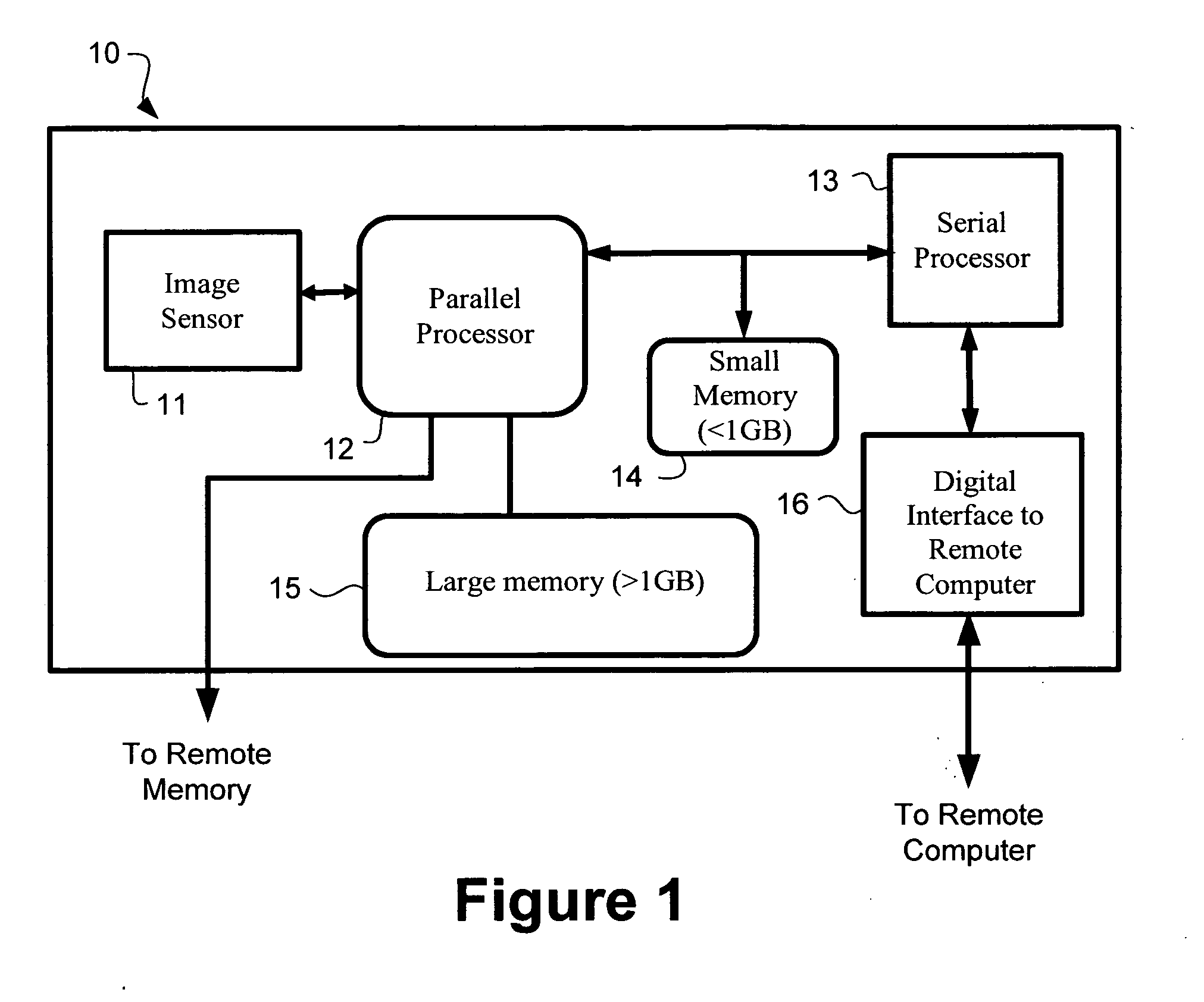System and method for high-speed image-cued triggering
a high-speed digital camera and image cue technology, applied in the field of high-speed “ smart” digital cameras, can solve the problems of limited on-board storage capacity of high-speed digital cameras, too expensive long-term storage for many applications, and high cost of digital memory
- Summary
- Abstract
- Description
- Claims
- Application Information
AI Technical Summary
Benefits of technology
Problems solved by technology
Method used
Image
Examples
Embodiment Construction
[0019]The present invention and its advantages are best understood by referring to the drawings. The elements of the drawings are not necessarily to scale, emphasis instead being placed upon clearly illustrating the principles of the invention.
[0020]One embodiment of the camera 10 is represented schematically in FIG. 1. Parallel processor 12 and serial processor 13 perform the processing functions for the camera 10. There are two common techniques for processing high-speed imagery: “pipeline” and “parallel.” The pipeline technique adds latency to the processing time by requiring that the “pipeline” be filled before processing begins. Once filled, each sequential operation on the pipeline represents final processing of an image pixel. The parallel technique utilizes multiple processors running in parallel to accomplish image processing. The extreme example is a processor for each image pixel. However, this is unrealistic given the status of current technology and some reasonable numb...
PUM
 Login to View More
Login to View More Abstract
Description
Claims
Application Information
 Login to View More
Login to View More - R&D
- Intellectual Property
- Life Sciences
- Materials
- Tech Scout
- Unparalleled Data Quality
- Higher Quality Content
- 60% Fewer Hallucinations
Browse by: Latest US Patents, China's latest patents, Technical Efficacy Thesaurus, Application Domain, Technology Topic, Popular Technical Reports.
© 2025 PatSnap. All rights reserved.Legal|Privacy policy|Modern Slavery Act Transparency Statement|Sitemap|About US| Contact US: help@patsnap.com



